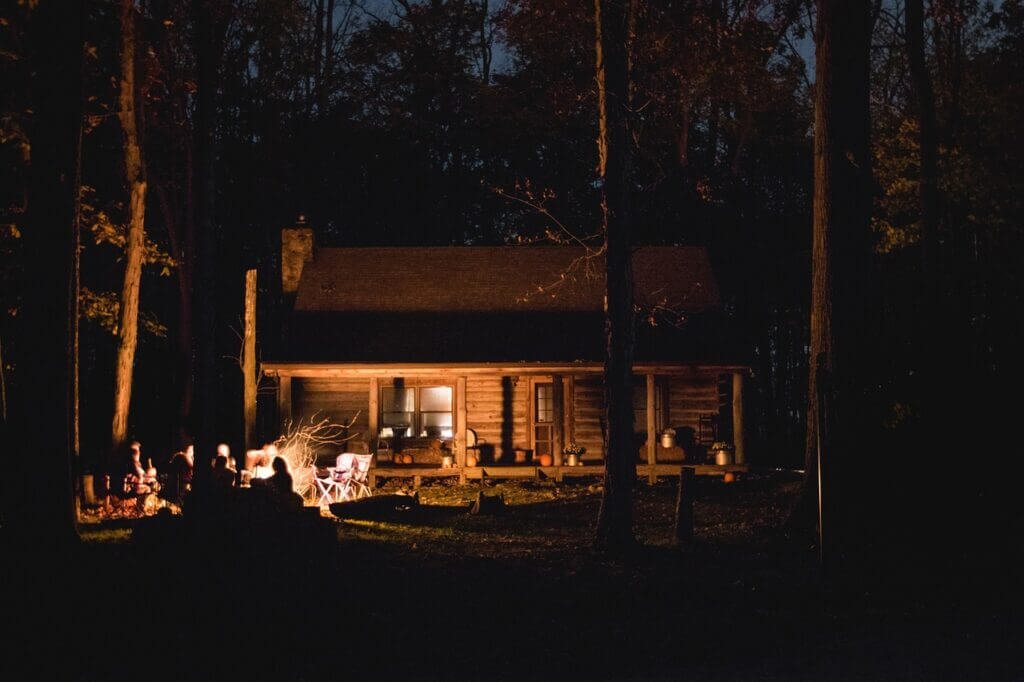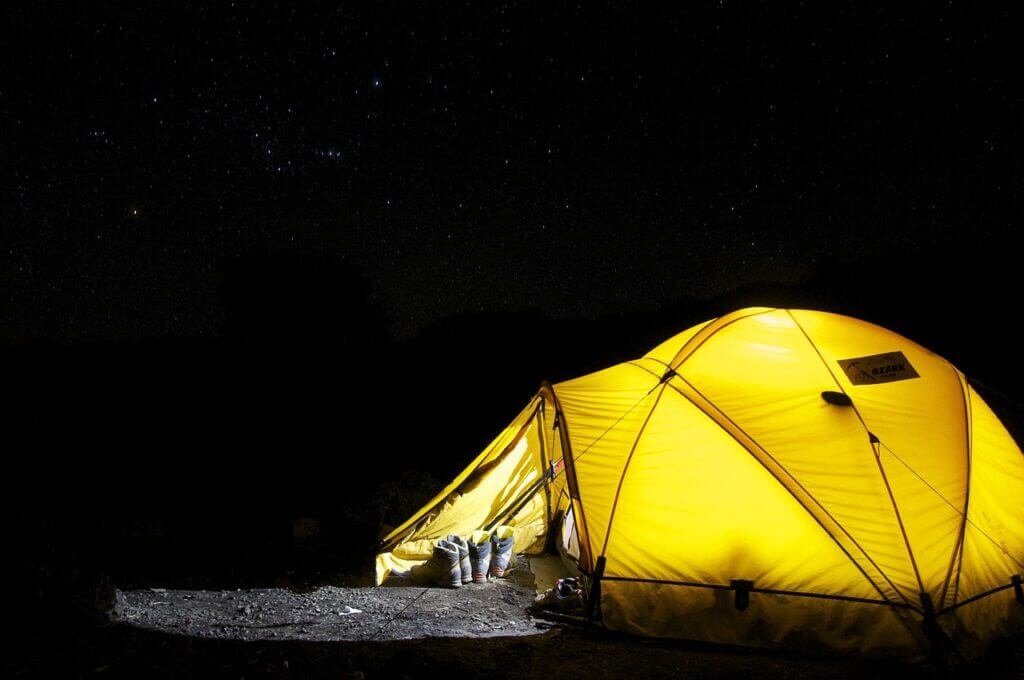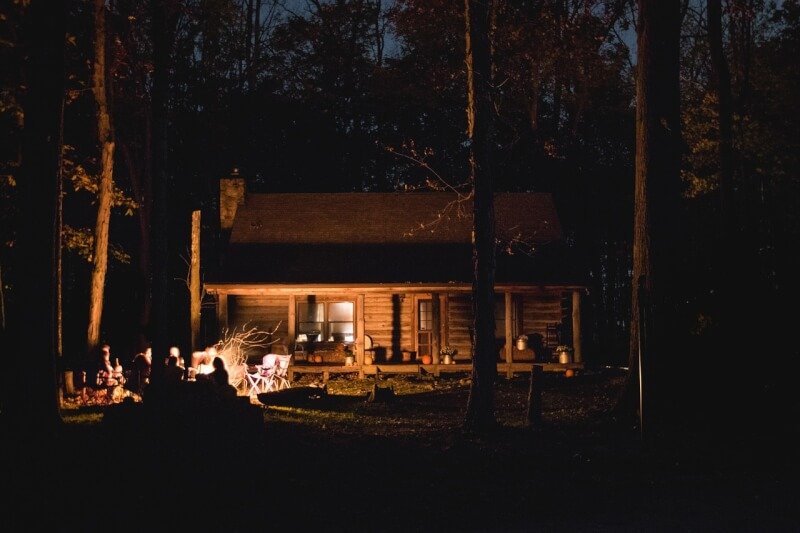If you’re planning on embarking on a memorable camping adventure in one of the majestic national parks, it’s important to familiarize yourself with the rules and regulations. Whether you’re a seasoned outdoor enthusiast or a first-time camper, understanding and following these guidelines not only ensures a safe and enjoyable experience but also helps preserve the beauty of these natural wonders for future generations. So, before you pitch your tent under a star-studded sky or wake up to the calls of wildlife, let’s explore the essential dos and don’ts of camping in national parks.

Camping Permits
Obtaining a Camping Permit
When planning a camping trip in a national park, it is important to obtain a camping permit. Camping permits are required to ensure that campsites are properly managed and resources are protected. To obtain a camping permit, you will need to visit the park’s official website or contact the park’s visitor center. The process of obtaining a permit may vary depending on the park, so it is recommended to check the specific park’s regulations and procedures.
Reservation Options
Many national parks offer reservation options for camping permits. This allows campers to secure their desired campsites in advance and guarantees their spot. Reservations can usually be made online through the park’s official website or through a designated reservation system. It is important to note that popular campsites and peak seasons tend to fill up quickly, so it is advisable to make reservations well in advance to ensure availability.
Permit Fees and Validity
Camping permits usually come with a fee that helps support the maintenance and conservation efforts of the national park. The fees may vary depending on the park and the type of camping permit. Some parks offer daily or nightly rates, while others may have set fees for a specific duration. It is essential to check the park’s website or contact the visitor center to obtain accurate information regarding permit fees and their validity.
Cancellation and Refunds
Life is unpredictable, and sometimes plans change. If you are no longer able to go camping, it is crucial to cancel your camping permit as soon as possible. Most national parks have cancellation policies in place that allow campers to receive a refund if they cancel within a certain timeframe. These policies vary from park to park, so it is advisable to review the cancellation policy when obtaining the camping permit. By canceling your permit and providing ample notice, you allow other campers the opportunity to secure a campsite.
Camping Locations
Designated Camping Areas
National parks have designated camping areas where campers can set up their tents or park their RVs. These camping areas are typically well-maintained and equipped with amenities such as picnic tables, fire pits, and restroom facilities. It is important to camp only in designated areas to help preserve the natural environment and minimize impact on the ecosystem. Before setting up camp, familiarize yourself with the park’s camping map to ensure you are in a permitted area.
Primitive Camping
For those seeking a more rustic and secluded camping experience, national parks often offer primitive camping options. Primitive camping allows you to immerse yourself in the wilderness and camp in undeveloped areas of the park. These campsites usually do not have amenities such as picnic tables or restroom facilities, so it is essential to come prepared with all necessary supplies. Additionally, guidelines and regulations may differ for primitive camping, so be sure to check with the park authorities for any specific requirements.
Backcountry Camping
Some national parks provide the opportunity for backcountry camping, which allows campers to venture into remote areas of the park. Backcountry camping offers a unique experience for outdoor enthusiasts and backpackers who are looking to explore off-the-beaten-path locations. However, it is important to note that backcountry camping often requires additional permits and may have specific rules and regulations. Research the specific park’s backcountry camping guidelines and familiarize yourself with any safety precautions or equipment requirements.

Campsite Requirements
Campsite Selection
When selecting a campsite, it is important to consider factors such as proximity to amenities, privacy, and terrain. Choose a campsite that aligns with your preferences and needs, whether you prefer a site close to water sources or one that offers a more secluded experience. Some campsites may require reservations, so planning ahead will ensure you secure your preferred spot.
Site Occupancy
National parks have specific regulations regarding site occupancy to ensure everyone has a fair chance to enjoy the camping experience. These regulations typically determine the maximum number of people and tents allowed per site. It is important to abide by these occupancy limits to maintain a harmonious camping environment and respect fellow campers.
Campsite Markers
To ensure clarity and organization within the campground, most national parks require campers to display campsite markers. Campsite markers are typically provided by the park or can be obtained upon check-in. These markers help identify which sites are occupied and which are available, making it easier for park rangers and fellow campers to navigate the campground.
Campfire Regulations
Campfires can be an enjoyable part of the camping experience, but it is crucial to follow campfire regulations to prevent wildfires and protect the natural surroundings. National parks often have specific rules regarding campfire use, such as designated fire rings or firewood restrictions. It is important to familiarize yourself with these regulations and never leave a campfire unattended. Remember to properly extinguish the fire before leaving the campsite or going to bed.
Safety Guidelines
Wildlife Safety
National parks are home to a diverse range of wildlife, and it is important to respect their natural habitat. Keep a safe distance from wildlife and never attempt to feed or approach them. Proper food storage is essential to prevent attracting wildlife to your campsite. Familiarize yourself with the specific park’s wildlife safety guidelines and learn how to safely encounter and coexist with the local fauna.
Fire Safety
Campfires are a common occurrence in camping, but it is essential to prioritize fire safety. Follow the park’s guidelines on fire safety and ensure that campfires are allowed in your specific camping area. Pay attention to any fire restrictions or bans that may be in place during your visit. Always keep a fire extinguisher or water source nearby, and properly extinguish the fire before leaving the campsite or going to sleep.
Weather Preparedness
Weather conditions can change rapidly in national parks, so always be prepared for various scenarios. Pack weather-appropriate clothing, including rain gear, and check the weather forecast before your trip. Familiarize yourself with any potential hazards, such as flash flood zones or lightning-prone areas. Be alert and take necessary precautions to ensure your safety during your camping adventure.

Visitor Guidelines
Check-in and Check-out Times
To maintain order and accommodate all visitors, national parks have check-in and check-out times for campsites. These times ensure that campers have a fair amount of time to set up and enjoy their campsite while also allowing park staff to prepare for new arrivals. It is important to arrive within the designated check-in time and vacate the campsite by the check-out time to avoid any inconveniences.
Quiet Hours
National parks aim to provide a peaceful and enjoyable camping experience for all visitors. As such, quiet hours are established to minimize noise disturbances during periods of rest and sleep. Adhering to quiet hours promotes a respectful camping environment and allows everyone to relax and appreciate the natural surroundings. Be aware of the specific park’s quiet hours and maintain a considerate noise level during your stay.
Alcohol and Drug Policies
Alcohol and drug policies vary among national parks, and it is essential to familiarize yourself with the specific regulations of the park you plan to visit. Some parks may have restrictions on bringing alcohol into the campground, while others may allow it in moderation. It is important to consume alcohol responsibly and respect the regulations put in place to ensure the safety and enjoyment of all campers.
Weapon Restrictions
National parks prioritize visitor safety, and as such, many parks have restrictions on the possession of weapons within their boundaries. Familiarize yourself with the specific park’s regulations regarding weapons, including firearms, knives, or other potentially dangerous tools. Complying with these restrictions helps maintain a safe camping environment for all visitors.
Pet Regulations
Leash Regulations
Many national parks welcome pets to enjoy the great outdoors along with their owners. However, it is important to follow leash regulations to ensure the safety of both your pet and the park’s wildlife. Most parks require pets to be kept on a leash at all times. This helps prevent disturbances to wildlife, provides control over your pet, and ensures a comfortable and safe experience for all park visitors.
Pet Waste Management
Cleanliness and sanitation are crucial aspects of camping, and this extends to pet waste management as well. Always pick up after your pet and properly dispose of their waste in designated receptacles. Leaving pet waste behind can pose health hazards and negatively impact the environment. By being responsible pet owners and cleaning up after our furry friends, we contribute to the preservation of the park’s natural beauty.
Campground Facilities
Restrooms and Showers
National parks typically provide restroom facilities and sometimes even showers within the campground. These facilities are essential for maintaining cleanliness and hygiene. While using these facilities, be mindful of other campers and maintain cleanliness by properly disposing of trash and leaving the facilities as you found them.
Trash Disposal
Proper trash disposal is crucial to keep the campground clean and protect the environment. Most national parks have designated trash receptacles throughout the campground, and it is important to use these bins for disposing of any waste properly. Avoid leaving trash unattended at the campsite and always practice the “pack it in, pack it out” principle by taking your trash with you when leaving the campground.
Potable Water
Access to clean and safe drinking water is vital during a camping trip. National parks often provide potable water sources within the campground, such as water spigots or drinking fountains. Familiarize yourself with the location of these water sources and bring reusable water bottles for easy refilling. It is essential to stay hydrated while enjoying outdoor activities and minimize the use of single-use plastic bottles.
Activities and Recreation
Hiking and Trail Usage
National parks offer a wealth of hiking opportunities, allowing you to explore the beauty and diversity of the park’s landscapes. When embarking on a hike, always follow designated trails and respect any restrictions or closures for preservation purposes. Stay on the designated path to avoid damaging fragile ecosystems and follow the Leave No Trace principles to minimize your impact on the environment.
Fishing and Hunting
Fishing and hunting regulations vary among national parks, and it is crucial to familiarize yourself with the specific rules of the park you plan to visit. Many parks require fishing permits or licenses, and some may have restrictions on the use of certain fishing techniques or the types of fish you can catch. If you plan to engage in hunting, be aware of the park’s specific regulations, including permit requirements and designated hunting areas.
Boating and Water Activities
If the national park you are visiting has water bodies, you may have the opportunity to engage in boating and other water activities. However, it is important to follow the park’s regulations and guidelines for watercraft usage. Some parks may require permits for boating, while others may have restrictions on specific water activities. By adhering to these rules, you help maintain a safe and enjoyable experience for yourself and other visitors.
Leave No Trace Principles
Pack It In, Pack It Out
The “pack it in, pack it out” principle is a fundamental rule to follow when camping in national parks. This means that any waste or refuse brought into the campground should be taken out when leaving. It is essential to leave the campsite in the same condition as you found it, minimizing your impact on the environment and ensuring the next visitor’s enjoyment.
Respect Wildlife
National parks are habitats for a wide variety of wildlife, and it is crucial to respect their natural behavior and habitats. Maintain a safe distance from wildlife and observe them from afar. Do not approach, touch, or feed any animals you encounter, as this can harm both you and the animals. By respecting wildlife, we contribute to the preservation of their natural habitats and help maintain a healthy ecological balance.
Camp Only in Designated Areas
To protect the fragile ecosystems and natural beauty of national parks, it is essential to camp only in designated areas. These areas are established to minimize the environmental impact caused by camping activities. Be sure to set up camp within the designated boundaries and avoid venturing off into sensitive or protected areas. By following this principle, we help ensure the preservation of the park for future generations to enjoy.
Minimize Campfire Impacts
Campfires are a common part of the camping experience, but it is important to minimize the impact they have on the environment. Follow the park’s guidelines for campfire usage, including using only designated fire rings or pits. Collect firewood responsibly, and avoid damaging live vegetation or using excessive amounts of wood. When extinguishing the fire, ensure it is completely out and cold before leaving the campsite.
Enforcement and Penalties
Violation Reporting
National parks take the rules and regulations seriously, and it is essential to report any violations or suspicious activities to park authorities. If you witness someone breaking camping regulations, damaging natural resources, or endangering wildlife, inform park rangers or staff. By reporting violations, you assist in maintaining the integrity and safety of the park for all visitors.
Penalties for Non-compliance
Non-compliance with national park regulations may result in penalties, including fines or citations. These penalties are in place to enforce the rules and ensure that all visitors can enjoy the park in a safe and respectful manner. It is important to familiarize yourself with the specific penalties associated with different violations. Adhering to the rules and regulations not only protects the park’s natural resources but also guarantees a memorable and positive camping experience for all.


